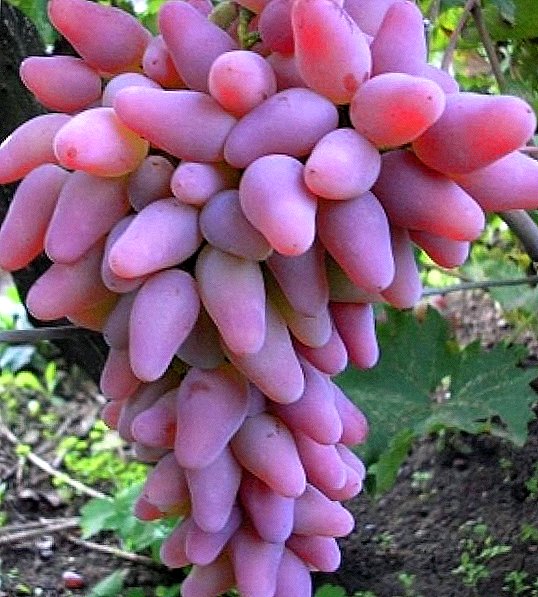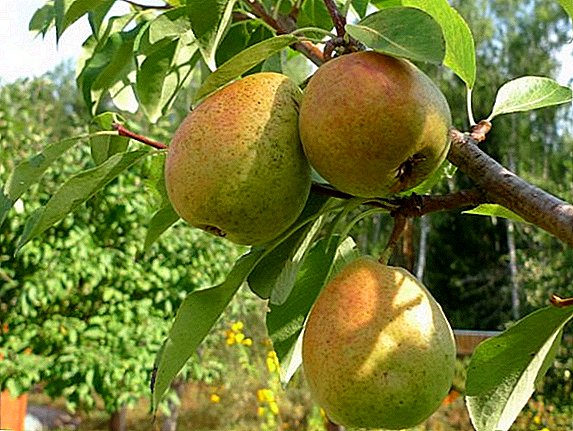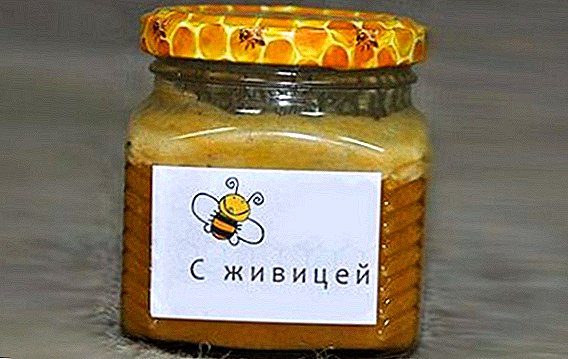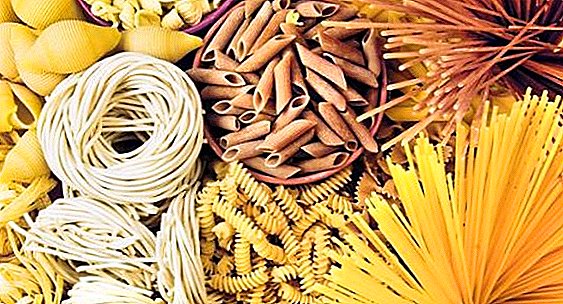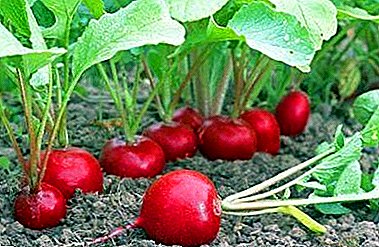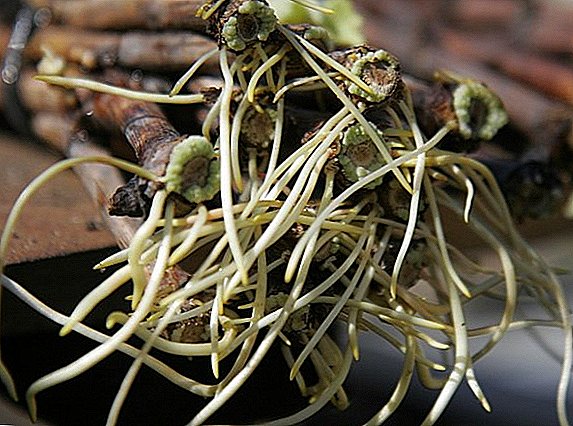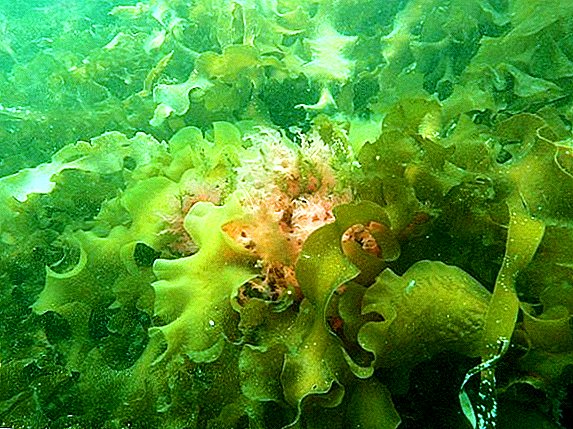 Laminaria, also known as kelp, has long been no longer exotic on our tables. However, in the European diet, it still does not occupy the place that I would like to take for this plant to nutritionists and physicians. The reason for this is often called not outstanding taste of kelp. However, as practice shows, sea cabbage makes great salads and other dishes, whose taste is not inferior to the indisputable benefit to the human body, which has kelp.
Laminaria, also known as kelp, has long been no longer exotic on our tables. However, in the European diet, it still does not occupy the place that I would like to take for this plant to nutritionists and physicians. The reason for this is often called not outstanding taste of kelp. However, as practice shows, sea cabbage makes great salads and other dishes, whose taste is not inferior to the indisputable benefit to the human body, which has kelp.
What is kelp
Laminaria is also called sea kale, as it grows in the sea. And the seas, along with the oceans, where various species of this brown alga grow, on our planet a lot.
We have the most famous types of kelp, which grow in the coastal zones of the Kara and White seas: sugary and palchatorasosesennaya.  These algae look like long and narrow leaves, called thalli, which can grow up to 20 meters in length, forming whole algal thickets in the water column. Usually these thalli attached to the bottom at a depth of 10 meters with the help of the sole.
These algae look like long and narrow leaves, called thalli, which can grow up to 20 meters in length, forming whole algal thickets in the water column. Usually these thalli attached to the bottom at a depth of 10 meters with the help of the sole.
Did you know? The natural color of freshly harvested sea kale is dark brown. And only a day after collecting the thallus laminaria green.
Nutritional value and caloric content of the product
The calorie content of this alga is low and is only 24.9 kcal per 100 g of product. This amount of seaweed contains:
- 0.9 g of proteins;
- 0.2 g fat;
- 3 g of carbohydrates.
 This alga is extremely saturated with minerals in the form:
This alga is extremely saturated with minerals in the form:- iodine;
- potassium;
- sodium;
- magnesium;
- calcium;
- silicon;
- boron;
- cobalt;
- bromine;
- arsenic;
- vanadium;
- arsenic;
- strontium;
- cadmium;
- copper;
- sulfur;
- gland;
- fluorine;
- Selena;
- rubidium;
- nickel;
- manganese;
- aluminum;
- phosphorus;
- zinc.
 Vitamins are well represented in sea kale, especially with vitamin B group, which is contained there almost in its entirety.
Vitamins are well represented in sea kale, especially with vitamin B group, which is contained there almost in its entirety.In addition, this seaweed is saturated:
- vitamin C;
- vitamin E;
- vitamin D;
- vitamin PP, that is, nicotinic acid;
- vitamin K;
- provitamin A in the form of beta-carotene.
Did you know? Laminaria got its name from the Latin word "lamina", which means plate. The reason was the characteristic flat thallus.
Organic substances are represented in this alga by proteins, amino acids, omega-3 and omega-6 polyunsaturated fatty acids, saturated fatty acids, phytosterols, fiber, polysaccharides, and nitrogenous bases. 
The beneficial properties of kelp
Physicians identify three main qualities of kelp, causing its beneficial properties. They consist in the following effects:
- Laxativeexpressed in the ability of the alga to absorb mucus and any other liquid substances. Increasing in volume, portions of seaweed irritate the intestinal mucosa, prompting it to activity. As a result, the intestines are effectively cleaned.
- Hypolipidemic, effectively reducing fat concentration in the blood.
- Thyroidcontributing to the saturation of the body with iodine. Being expressed in the form of organic compounds, iodine is absorbed extremely efficiently.
 In addition, the alga has many other useful functions for the human body:
In addition, the alga has many other useful functions for the human body:- vascular strengthening by means of iodine salts, which, by supporting the normal activity of the thyroid gland, contribute to the healing of the entire cardiovascular system;
- cleansing the blood by reducing the level or complete removal of bad cholesterol, heavy metal salts and radionuclides from the blood;
- lowering blood pressure by optimizing cardiovascular activity;
- improving the activity of the digestive system by normalizing stool and stimulating the metabolic process;
- burning fat with the help of a unique substance fucoxanthin, which converts body fat reserves into heat energy;
- strengthening immunity, aided by an abundance of nutrients present in the algae, as well as optimizing the activity of various organs in the human body
- restoration of hormone production, which contributes to the improvement of the thyroid gland, which is responsible for the endocrine system;
- wound healing, which is stimulated by the presence of alginic acid in sea cabbage;
- improvement of visual acuity due to the presence of iodine and beta-carotene salts in the algae.
 Due to all these diverse beneficial properties, kelp is quite actively used to combat such ailments:
Due to all these diverse beneficial properties, kelp is quite actively used to combat such ailments:- diseases of the thyroid and parathyroid glands;
- diseases of the gastrointestinal tract;
- violations in the activity of the reproductive system;
- diabetes and pancreatitis;
- joint diseases;
- problems with the nervous system;
- diseases of the cardiovascular system;
- metabolic disorders;
- decreased visual acuity;
- skin diseases and problems with mucous membranes.
You probably will be interested to learn about the benefits and harms of dried kelp.
Contraindications to the use
With all the abundance of the undoubted beneficial qualities of sea kale, it also has properties that prevent its consumption by certain categories of people.
First of all, this is the group that is necessarily present among consumers of absolutely all food products. This, of course, is about people with individual intolerance to the entire product or its components. There are such in relation to kelp.  In addition, the consumption of this alga is not recommended for people suffering from:
In addition, the consumption of this alga is not recommended for people suffering from:
- nephritis or nephrosis;
- furunculosis or acne;
- hemorrhagic diathesis;
- chronic pyoderma;
- hyperthyroidism and multinodular goiter;
- intestinal obstruction.
Important! Although there are no clear contraindications for kelp for women who pregnant or breastfeeding, yet they should use it carefully.
Laminaria application areas
Being a product of a wide profile, sea kale is successfully used in cooking, in cosmetology, and in traditional medicine, and as an effective means for losing weight.
In cooking
The specific taste of algae is far from being enjoyed by everyone, but experienced chefs argue that when properly prepared, the algae becomes tasty by itself and gives a very piquant flavor to the foods in which it acts as an ingredient.
Here, for example, some of the most popular dishes. 
Vinaigrette with kelp
Ingredients:
- pickled kelp - 0.2 kg;
- pickled white cabbage - 0.1 kg;
- pickled cucumber - 1 pc .;
- big beets - 1 pc .;
- potatoes - 2 pcs .;
- Onion - 1 pc .;
- canned green peas - 0.15 kg;
- sunflower oil - 3 tablespoons.
Read about the benefits of cabbage such as white cabbage, Brussels sprouts, red cabbage, pak choi, kohlrabi, Peking meat, broccoli and Savoy cabbage.
Cooking:
- Boiled beets with potatoes.
- Sliced cucumber is added to sliced boiled vegetables.
- White cabbage shred.
- Onion is cut.
- Then all this should be combined with kelp and add green peas, sunflower oil and salt to taste.
- Everything mixes well.
 Meat soup with kelp
Meat soup with kelp
Ingredients:
- meat - 0.2 kg;
- sauerkraut - half a cup;
- boiled kelp - half a cup;
- potatoes - 2 pcs .;
- beets - 1 pc .;
- carrots - 1 pc .;
- onions - 1 head;
- flour - 1 tablespoon;
- tomato paste - 2 tablespoons;
- margarine - 2 tablespoons;
- chicken egg - 1 pc .;
- sour cream - 3 tablespoons;
- water - 0.8 l.
 Cooking:
Cooking:
- Meat should be brought to half readiness.
- Boil the broth again and put boiled kelp and chopped potatoes there.
- Not bringing the potatoes to full readiness, you need to add the broth in a saucepan with sauerkraut, browned onions and carrots.
- Then borscht should be filled with browned flour.
- You can fill the soup with spices and pickle to taste, as well as sugar.
- Stew with fat and with vinegar essence diced beetroot and send it to borsch.
- After a 10-minute boil the borscht will be ready.
- The taste of borscht is even better when adding sour cream and finely chopped eggs.
 Laminaria, stewed with pork
Laminaria, stewed with pork
Ingredients:
- boiled kelp - 0.2 kg;
- pork - 0.2 kg;
- lard - 0.2 kg;
- soy sauce - 1 tablespoon;
- onions - half head.
Important! It is strictly forbidden to give kelp to children under three years old.
Cooking:
- Boiled kelp finely chopped.
- Raw meat is cut into small pieces.
- Then chopped onions.
- The meat is fried with it in a well heated pan.
- Then put there chopped seaweed with the addition of soy sauce and half a cup of broth.
- After boiling the liquid in a pan, it is mixed with melted pork lard.

Laminaria for weight loss
This alga has a unique substance, which is nowhere else but the other two types of algae. It is called fucoxanthin. It is it that paints the thallus of kelp in brown. But its value for a person, of course, is not in this, but in the ability to transform the body's fatty tissue into heat energy.
This element of the algae in the first place and determines its ability to actually promote weight loss.
For weight loss, they also use: orange, coconut, raisins, persimmon, baked apples, cedar oil, turnips, and watermelon.
In addition, other nutrients in kelp help:
- remove excess fluid from skin cells;
- fight edema;
- inhibit the appearance of cellulite;
- optimize metabolic processes;
- activate skin tone.
 Practice shows that, using sea kale, you can get rid of 6 kg of excess weight in a week, without resorting to any additional physical exercises and rigid diets.
Practice shows that, using sea kale, you can get rid of 6 kg of excess weight in a week, without resorting to any additional physical exercises and rigid diets.Application in cosmetology
This alga, due to its multifunctional nutrients, is very widely used in the cosmetic field. Quite a lot of gels, creams, masks, shampoos are composed of sea kale.
For skin problems, it is also recommended: medicinal comfrey, field horsetail, anise lofant, asparagus, parsnip, peony and feijoa.
With her help succeeds:
- stimulate the activity of skin cells, strengthen the walls of blood vessels, clean the pores;
- promote the breakdown of subcutaneous fat;
- remove puffiness;
- treat skin diseases;
- improve its elasticity.
Very widely it is used in the form of cosmetics that can be prepared by yourself at home.  Recipe for seaweed mask for dry and fading skin:
Recipe for seaweed mask for dry and fading skin:
- Pour 3 tablespoons of chopped dried kelp into a small container.
- Then pour the water in there and leave to swell for a couple of hours. From the next paragraph it is clear that the amount of water does not matter, since the excess is drained. Therefore, do not hesitate to pour.
- After that, the water that has not been absorbed must be drained, and the swollen mass should be spread out in a thin layer on gauze with an area twice the size of the face.
- It is necessary to shift the algae layer to half of the entire gauze surface and cover this layer with the vacant part of the gauze.
- The resulting compress need to cover the entire face with eyes closed for a quarter of an hour.
- The procedure is recommended every three days.
- Preparing the swollen mass of kelp according to the method described in the first recipe, you should mix this mass with 1 teaspoon of salt, which can be both cooked and marine.
- Then, the resulting compress should cover the face and gently massage it with circular movements of the entire compress. It turns out the effect of scrub, which helps to reduce oily skin and narrow pores.
- After the session, the face should be washed with running water.
- This scrub mask is recommended to be repeated twice a week.

Use in traditional medicine
Traditional healers have long and effectively used sea kale to combat various diseases. For example, decoctions and infusions are very effective as therapeutic agents for problems with the respiratory system. Even severe bronchitis recedes if you drink the infusion of dried kelp.
Also, this alga significantly helps in improving the activity of the central nervous system and brain, eliminates chronic fatigue syndrome.  Practice shows that for the prevention of seasonal colds, it is enough to consume 30 grams of dry sea kale or 100 grams of kelp as salads every day.
Practice shows that for the prevention of seasonal colds, it is enough to consume 30 grams of dry sea kale or 100 grams of kelp as salads every day.
For the prevention and treatment of colds also used: verbena, anemone, nutmeg, amaranth, linden, raspberry and sage meadow.
Folk healers recommend for treatment of atherosclerosis:
- Pour a tablespoon of seaweed powder into a small glass container.
- Pour boiling water in the amount of 100 ml.
- For three hours, insist, covering the container with a lid.
- Divide the resulting infusion into three equal parts to obtain a single dose.
- Take the infusion for a month.
 Seaweed Powder A to Fight chronic problems in the upper respiratory tract such as sinusitis, laryngitis, tonsillitis or a banal rhinitis, should be:
Seaweed Powder A to Fight chronic problems in the upper respiratory tract such as sinusitis, laryngitis, tonsillitis or a banal rhinitis, should be:- A teaspoon of seaweed powder pour a glass of boiled water.
- Capacity with infusion close the lid and leave to infuse for ten hours.
- Gargle with this infusion throat every three hours.
Virtually no one doubts the health benefits of seaweed. And there are fewer and fewer people who doubt its taste, since there are already many recipes that represent kelp in all its culinary beauty. You probably will not regret if you try to verify this yourself.


